**January is National Birth Defects Prevention Month. Each Friday this month, in honor of those babies, we wanted to use this time to share a few stories from local moms who’ve dealt with these trials and tribulations and provide some great resources and information from local Dallas doctors. Although not all birth defects can be prevented, we hope that through raising awareness, steps can be taken to help prevent them.**
My son, Keegan, was born with the critical congenital heart defect (CCHD) of Tetralogy of Fallot with pulmonary atresia.
One in every 100 babies born in America each year, roughly 40,000 children, will be diagnosed some form of CHD. As many as 30% of those will be considered critical congenital heart defects, meaning those that will result in death without surgical correction within the first year of life.
While CHDs are not necessarily preventable birth defects, early detection is key in order to save the lives of those affected.
In our case, Keegan was diagnosed in utero, and we were able to develop a plan for his treatment before his birth. A simple screening after birth called a pulse oximetry test that uses a simple sticker placed around an infant’s foot to detect the amount of oxygenated blood can be an accurate predictor of the presence a CHD.
Luckily, Texas last year enacted a law making this noninvasive and life-saving test mandatory for all infants within 48 hours of birth, which for a heart baby can be some of the most difficult hours.
Keegan had an extremely eventful first of week of life, from birth to open heart surgery to ECMO to transplant in seven very short days. Here’s our story:
Day 2 of Keegan’s life was September 13, 2007.
Over 12 hours of that day for Keegan were spent inside the cardiac operating room trying to fix a heart smaller than a walnut. For us, those hours were spent on a roller coaster ride that was off to a terrifying and very rocky start. Despite the surgeons’ best efforts over 10 hours in the OR, Keegan’s heart would not work properly. He was placed on a type of life support called ECMO that oxygenated and circulated his blood for him. Our hope was that Keegan’s tiny body needed time to rest and respond to his repaired heart. He was also born several weeks early, and it was possible that his lungs needed a little time to catch up. We soon would find out that neither of those best-case scenarios existed for him. But on this day in 2007, we were grateful that he was alive, no matter what it took to keep him here.
The machine on the right is the ECMO circuit.
I am in the foreground on the left with Keegan in the incubator in front of me.
This was taken shortly after we were able to see him for the first time.
Keegan had the biggest room in the cardiac ICU, but with all the equipment, the desk chair in which I’m sitting was the only place to sit in the room.
Day 3 of Keegan’s life was spent processing what new world we found ourselves slogging through.
None of us remember much other than just the intense struggle just to keep breathing. We still had not had the chance to even meet Keegan yet. What color were his eyes? What type of personality did he have? Did he know where he was? Was he in pain? Did he know his family was around him? Would he recognize my voice? Even know that I was his mother? We did not know if he would wake up, come home.
Day three was about survival. Luckily, he did. And we did. At least for one more day.
Keegan on ECMO at 3 days old
Day 5
We finally started to see Keegan move his little hands and feet and were waiting anxiously for his eyes to open. Our biggest concerns were his kidneys, his lungs, and his brain. Keegan was officially listed as a status 1A on the transplant waiting list, although at the time, we hoped it was precautionary.
If his kidneys did not recover, his lungs continued to leak, or his brain continued to bleed, that last hope of transplant would be gone. The waiting seemed endless. Like we were lost in a time warp with days and nights that bled into each other. Our previous lives seemed so far away, and our future completely uncertain. I remember sitting on the hospital bridge overlooking the freeway with my dad early that morning, watching the cars speed by on their way to start another day. I realized for the first time that a congenital heart defect had changed my life forever. No matter what happened from here on out, things would never ever be the same.
We were not and are not alone in that living nightmare. For the families of one out of every 100 babies born this year, it will be their reality. For some of those, the nightmare will never end; their child will lose the battle with a congenital heart defect. We thank God for every day we wake with Keegan by our sides, and we pray for the comfort and healing of every parent who does not.
Our worst fears became reality on Day 6 of Keegan’s life.
An echo done prior to an attempted wean of ECMO support showed that a hematoma on the ventrical septal wall of his heart had bled out. The only way Keegan could survive was if he received a heart transplant.
At his age and size, the odds were nearly insurmountable against him. I will never forget the feeling of my heart stopping as the transplant cardiologist explained it all to us. She tried to instill as much hope as possible in us, but we could tell she didn’t have much to give. The grief was overwhelming. We were not and could not have prepared for this. We resolved to surround Keegan with happiness no matter what happened, while we clung to any sliver of hope we could find. If this was all the time he had with us, he would know only that he brought us the greatest joy.
Hanging onto hope was all we could do on Day 7.
It’s amazing how strong and fleeting that emotion can be in the same instant. Luckily for us, our hope, our miracle, came that night in the form of an angel named Johnston. On September 19, 2007, Keegan became the youngest and smallest heart transplant recipient in Texas and the smallest in the country.
While that first week was finally over, and Keegan’s broken heart was replaced with a perfect one, the battle for his life was truly just beginning.
His story is much, much more complicated than his complex congenital heart defect. His angel heart has remained one of the most stable things about him in the last six years, and we have come too close to losing him more times than I care to admit.
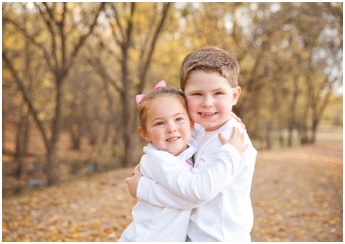 Keegan (6) & little sister Audrey (3)
Keegan (6) & little sister Audrey (3)
But we will continue to tell Keegan’s story.
We will continue to share the importance of screening for heart defects before birth in order for parents to be able to research options, create a plan, and prepare emotionally.
We will continue to advocate for pulse oximetry testing for all babies immediately after birth in order to give children with undiagnosed defects a fighting chance.
We will continue to remember the angels who have gone before us bravely fighting a war against their own hearts, and we will be grateful for every day we have together with our own heart warrior.
* * * * * * * * * * * * * * * * * * * * * * * * * * * * * * * * * * * * * * * * * * * * * * * * * * * *
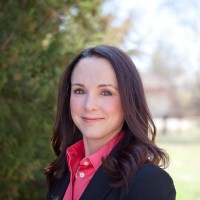 Madeleine Harrison lives in Plano with her husband, Gray, and two crazy kids, Keegan (6) and Audrey (3). Most of her time these days is devoted to Keegan’s extensive medical needs, but every now and then, she continues to work as an attorney from home. Maddie is also a passionate runner and triathlete, who would love you to join her on Team K’s for Keegan sometime.
Madeleine Harrison lives in Plano with her husband, Gray, and two crazy kids, Keegan (6) and Audrey (3). Most of her time these days is devoted to Keegan’s extensive medical needs, but every now and then, she continues to work as an attorney from home. Maddie is also a passionate runner and triathlete, who would love you to join her on Team K’s for Keegan sometime.
You can follow the Harrisons’ heart journey on their personal blog at http://keeganh.blogspot.com and on Twitter @mhharrison80.





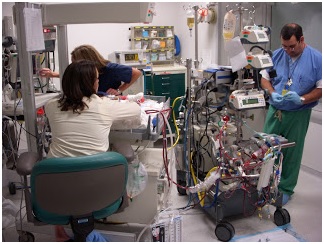
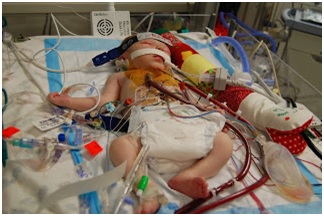


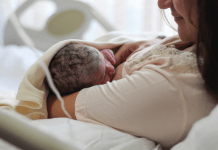
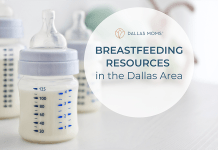






I’m so glad you have received the help you needed. I had a heart transplant in 1985 and have had thirty years of additional life. My husband and I are from Richardson.